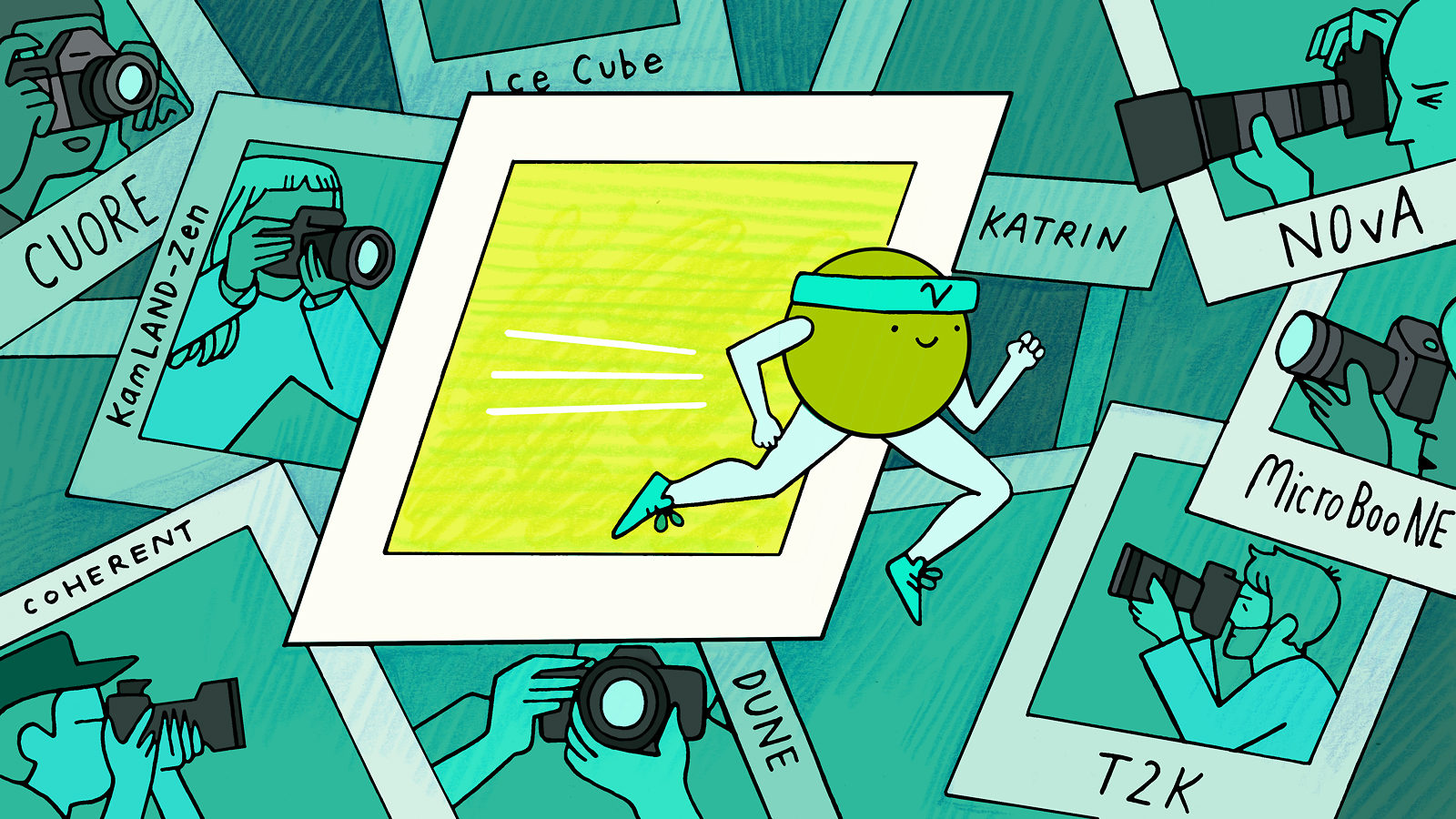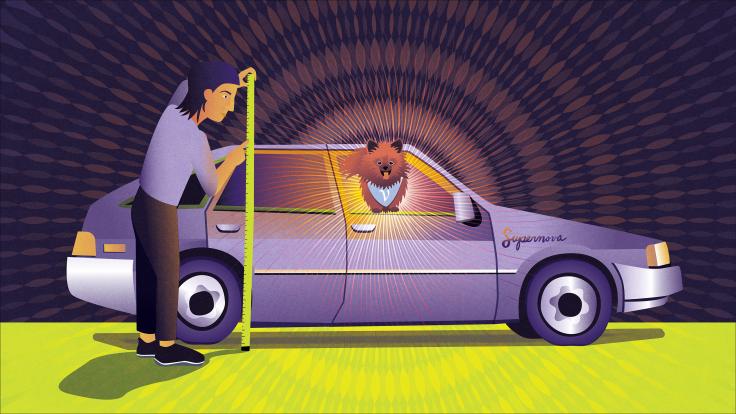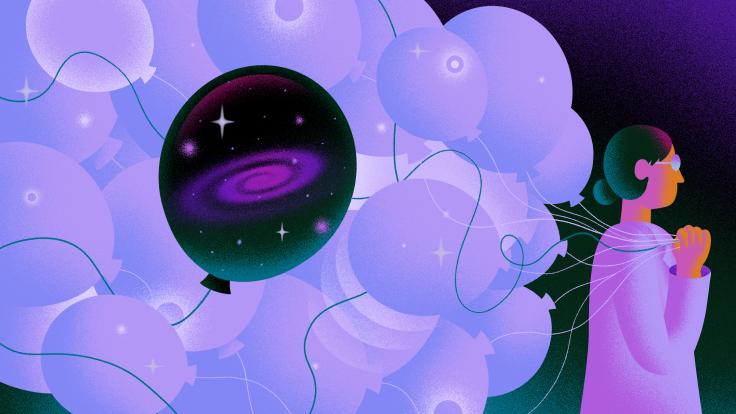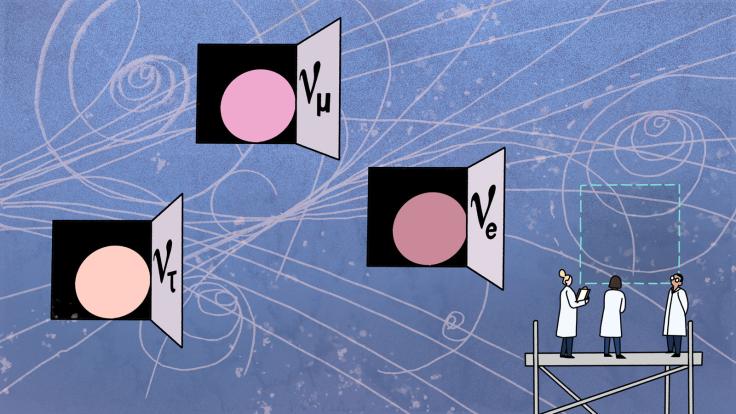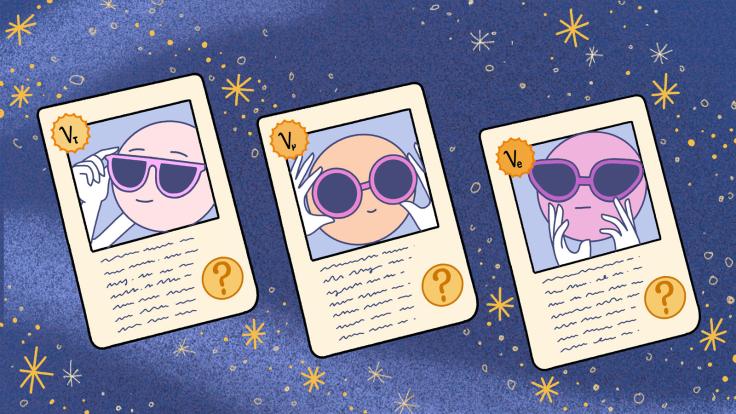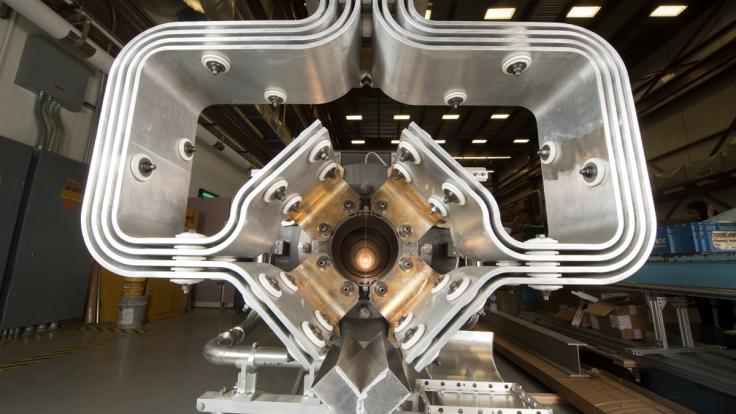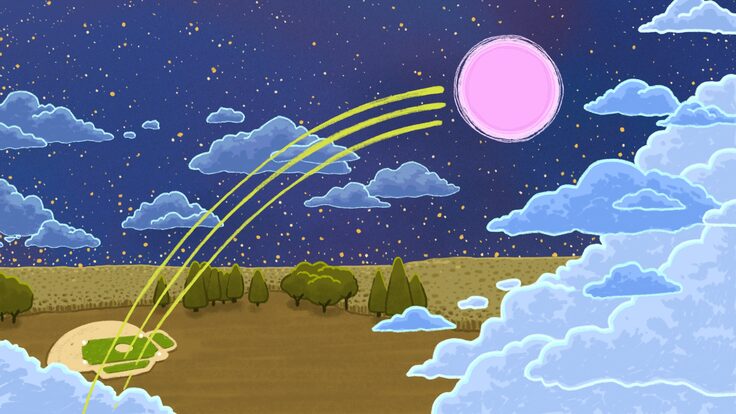There’s a lot to look forward to in the world of neutrinos, tiny particles that are constantly streaming through us unnoticed.
According to theorist Alexander Friedland of SLAC National Accelerator Laboratory, if you looked at the field of neutrino research 20 years ago, you wouldn’t recognize it compared to what it is now. “The developments have been absolutely remarkable,” he says. “It has evolved so much.”
Twenty years ago, in 1998, neutrinos exposed a shortcoming of the Standard Model of particle physics, scientists’ best explanation of the fundamental particles and forces that make up everything. According to the Standard Model, neutrinos should have no mass. But according to the observations of the Super-Kamiokande and then the Sudbury Neutrino Observatory experiments, they did. It was already known that they came in three types, but if they had mass this meant that they also shifted from one type to another as they flew along at nearly the speed of light.
Many mysteries remain about these particles with minuscule masses: Do neutrinos actually come in four types, as suggested by some experiments? What are the masses of neutrinos? Are neutrinos their own antiparticles? What can neutrinos tell us about the Standard Model, astrophysical phenomena and the formation of the universe?
Our current neutrino experiments have all gotten to a sort of midway point, says Lindley Winslow, a physicist at MIT. “We’re refueling and looking at the maps and figuring out our next steps into this really uncharted land,” she says. “It’s a little bit of a time to congratulate ourselves that we got to this point and then make the big push to the unknown.”
With Neutrino 2018, the XXVIII International Conference on Neutrino Physics and Astrophysics, right around the corner, we asked some neutrino experts for their quick takes on the roster of experiments going into this season and their predictions for upcoming victories in the field. Here’s what they had to say.
Chasing hidden flavors
Neutrinos are known to oscillate between three known types, or flavors, as they move through space: electron, muon and tau. But in 1995, physicists working on the Liquid Scintillator Neutrino Detector, or LSND, at Los Alamos National Laboratory stumbled upon clues that there may be an extra flavor hiding on the sidelines. They called it a “sterile neutrino,” a neutrino flavor that would not interact like the others.
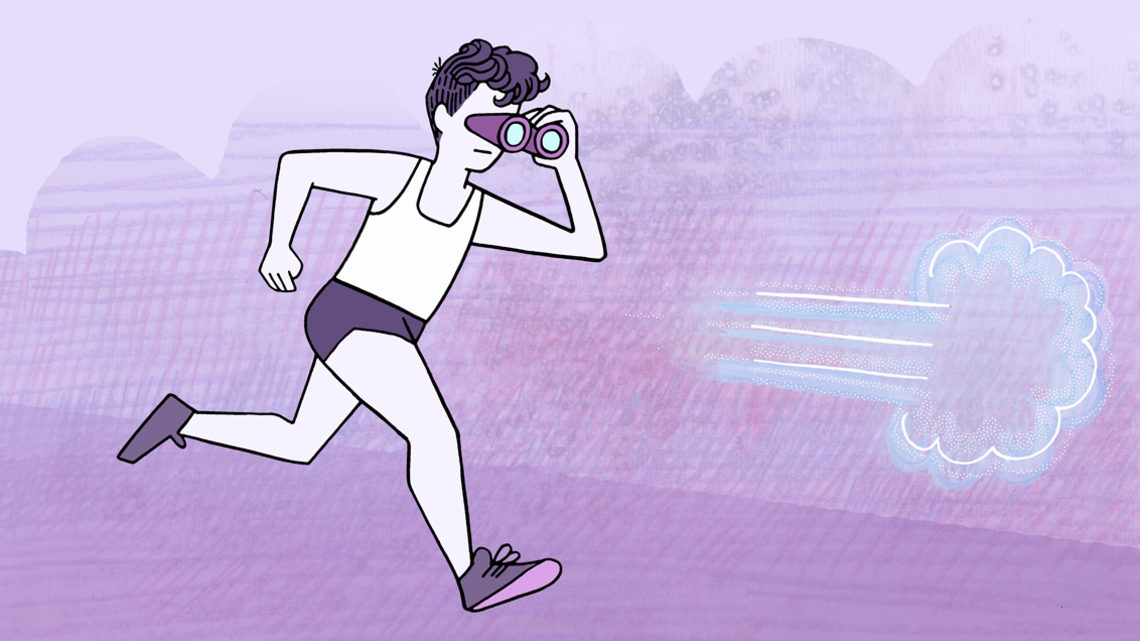
“Neutrinos outnumber electrons, protons and neutrons in today’s universe by a factor of 10 billion,” says physicist Joshua Spitz of the University of Michigan.
“Given this, it’s easy to see that the existence of a fourth type of neutrino, and corresponding mixing to the other three, would have significantly affected the evolution of the universe. Specifically, large scale structure, galaxy formation, dark matter, cosmic microwave background observables, and the creation and abundance of heavy elements could all be affected by the addition of a new type of neutrino.”
In the years since the LSND anomaly, physicists have been designing experiments geared towards chasing down this hidden flavor. In 2002, the MiniBooNE experiment began collecting data related to this at Fermi National Accelerator Laboratory.
Results have thus far shown an excess of MiniBooNE events that is consistent with the LSND signal, but it isn’t clear how this fits into a model of sterile neutrinos. The co-spokespeople for MiniBooNE, Richard Van de Water and Rex Tayloe, plan to present updated results at Neutrino 2018 that will add significant new information.
“The results will provide new information and insights into the question of the LSND and MiniBooNE excesses, especially the question of the consistency of the two data sets indicating whether new physics such as sterile neutrinos, or other more complicated models, are at play,” Van de Water says.
In addition, new, more sensitive experiments are just starting to come online. MiniBooNE’s successor is an experiment called MicroBooNE; it is expected to release its first physics results in the coming year. MicroBooNE will eventually be joined at Fermilab by ICARUS and SBND, forming a suite of three detectors known as the Short-Baseline Neutrino Program.
Beyond these accelerator-based experiments—which also include the Japan-based JSNS2—a number of radioactive-source and reactor-based experiments, including PROSPECT, STEREO, DANSS, CHANDLER and SOLID, are also working and hope to catch the theorized sterile neutrino sometime in the near future.
Tackling the mass ordering
Just as we know there are at least three different flavors of neutrinos, we also know that there are three different neutrino masses. But how these mass states are ordered is still a mystery. There are two possible ways neutrino mass states can be ordered: normal or inverted. Although many signs are pointing towards a normal ordering, the final call is still in review.
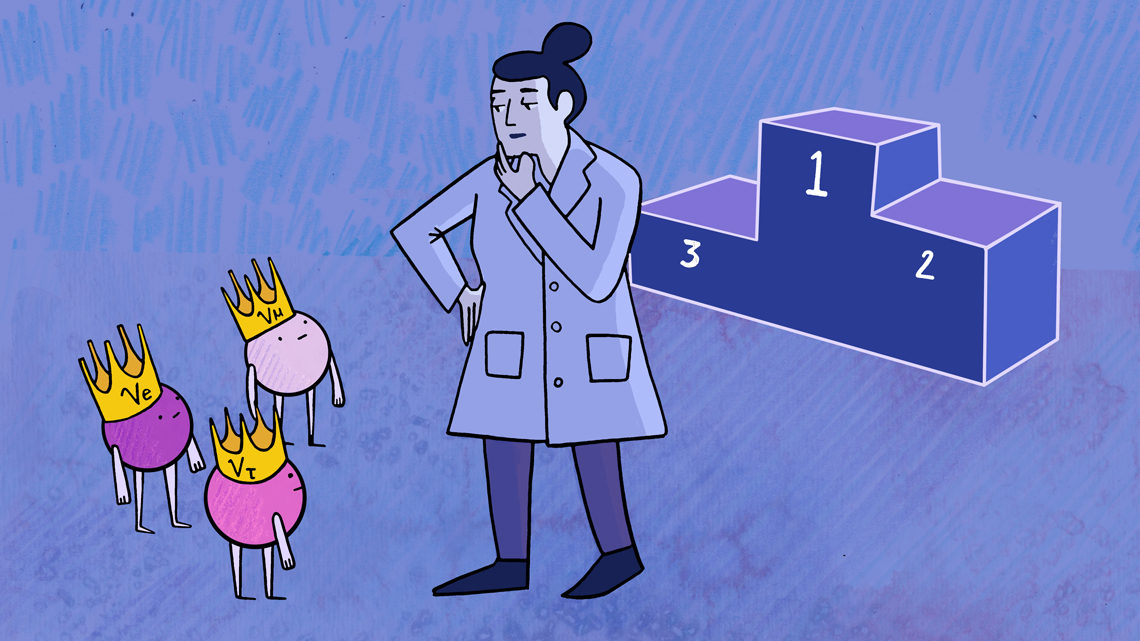
Knowing whether neutrinos have a normal or inverted mass ordering can help scientists test other models of the universe, such as one in which the four forces of nature unite into one at high energies.
In contrast with the short-baseline experiments searching for sterile neutrinos, experiments tackling the question of mass ordering are built to go long. The two major long-baseline experiments in operation are the T2K experiment hosted by KEK accelerator laboratory, which monitors a beam of neutrinos traveling more than 180 miles across Japan, and NOvA hosted by Fermilab, which studies a beam that originates about 500 miles from the detector in the United States. Fermilab just completed an upgrade of its accelerators, and the detector for the T2K experiment will gain sensitivity with an upgrade this summer. Reactor-based experiments, such as the Daya Bay Reactor Neutrino Experiment in China, are also involved in the investigation.
Many of the experts consulted for this article—including André de Gouvêa at Northwestern and Friedland at SLAC—say they are looking forward to a slew of results in the next few years from NOvA and T2K that could bring us closer than ever to figuring out the mass ordering.
According to Spitz at Michigan, telescope-based observations of large-scale structure are also quickly gaining sensitivity to measuring the sum of the neutrino masses by looking at its influence on the gravitational clumping of matter in the early universe. Combining this with other results might allow scientists to uncover the neutrino mass ordering.
“Seeing agreement between NOvA, T2K and telescopic observations of this property of the neutrinos will be absolutely extraordinary,” he says, “and seeing disagreement might even be more interesting. This will truly be ‘astroparticle physics,’ when we can start relating the properties of the neutrino to the formation of the universe.”
Other experiments are working to measure the combined mass of the three types of neutrinos. KATRIN, a neutrino experiment in Germany with a 200-ton spectrometer at its core, has just started taking data. The experiment will measure the energy of the electrons spit out during the decay of the radioactive isotope tritium and look for very slight distortions that will clue researchers in to the neutrino’s absolute mass.
“The absolute neutrino mass is one of these things that oscillation experiments can’t see at all,” says Alexander Himmel, a physicist at Fermilab. “We’re seeing the very beginning of data-taking with KATRIN. It’s a very technically challenging experiment and it’s been slow to get up and running, so over the next few years we’re looking forward to getting really beautiful measurements from them, which I think will be very exciting.”
Project 8, another experiment going after the absolute mass of the neutrino, will also use tritium, instead measuring the energy of individual electrons by measuring the frequency of their spiraling motion in a magnetic field. Although the goal of Project 8 is to demonstrate the technology, physicists hope to scale up the technique in the future.
Blowing the whistle on neutrino fouls
Most of the particles in our universe have corresponding antiparticles, which carry equal but opposite charges of their partners.
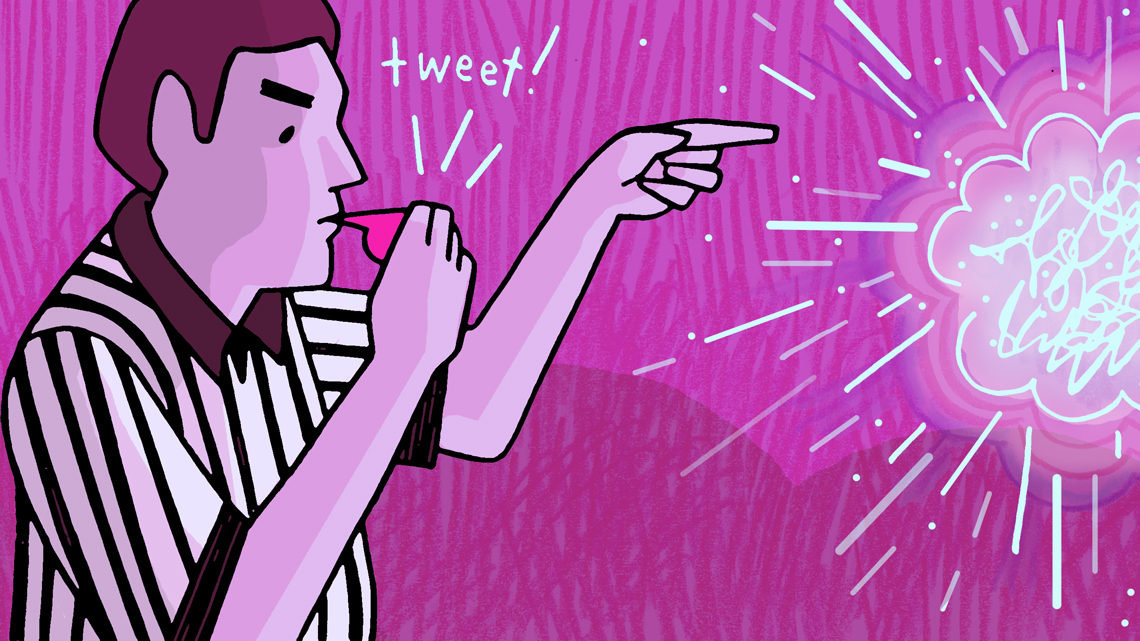
Scientists believe that during the Big Bang, there should have been equal amounts of matter and antimatter in the universe. But when matter and antimatter collide, they annihilate. This match should have ended in a tie, with matter and antimatter cancelling each other out and leaving behind nothing but energy.
And yet somehow, as you can guess from the matter-packed world we live in, matter was victorious. Scientists are still trying to figure out why. This is where charge-parity violations come into play.
For a while, physicists believed there had to be some sort of symmetry between the behavior of particles and their antimatter teammates, called CP symmetry. This means that if antineutrinos subbed in for neutrinos, the universe should treat them identically. But if this symmetry is somehow broken, it might explain how matter got the upperhand.
Long-baseline experiments such as NOvA and T2K, with assistance from reactor-based experiments such as Daya Bay, have set out to track the oscillations of neutrinos and antineutrinos to determine if they are fundamentally different. That would indicate that CP is broken, offering a possible explanation for why matter took home the win in the creation of the universe.
According to Friedland, one of the major neutrino announcements expected soon is the release of antineutrino run data from the NOvA experiment, which, in combination with T2K, will either strengthen existing hints of CP violation or send teams of scientists running off in some new direction.
“We are seeing hints that something interesting is happening between neutrinos and antineutrinos,” says Kendall Mahn, a physicist at Michigan State University. “We’re trying to take more data to see if this is going to turn into something really exciting or fizzle out. It just shows us that we’re really on the leading edge of something.”
Another possible symmetry-breaking that might have had a hand in sculpting the universe as we know it is called lepton number violation. This would occur if neutrinos were actually their own antiparticles. Scientists are testing this hypothesis by looking for a process in which neutrinos act as their own opposites and cancel one another out: neutrinoless double-beta decay.
Experiments such as CUORE, Majorana Demonstrator, GERDA and NEXT are on the offensive, all having recently published new results. Results from KamLAND-Zen 800 are also anticipated by the end of the year.
“Just turning the detector on was a feat in itself, says Winslow at MIT, referring to CUORE. “Now we have the hard job of keeping it running for five years and getting the ultimate sensitivity where we actually think we should be able to see something.”
The Standard Model fitness test
Scientists aren’t just studying neutrinos in neutrino experiments; they’re also creating tests of the Standard Model. Last summer, physicists involved in the COHERENT experiment hosted at Oak Ridge National Laboratory were able to measure for the first time a phenomenon predicted via the Standard Model that had been sought for four decades without detection. The phenomenon, known as coherent elastic neutrino-nucleus scattering, also comes into play in the explosions of supernovae.
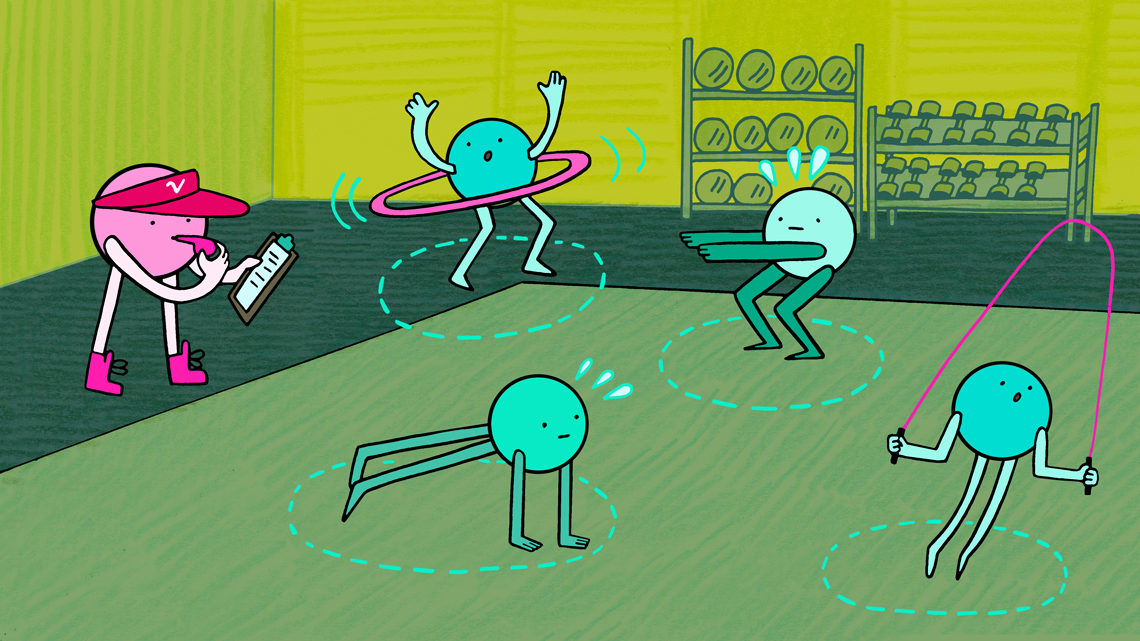
In coherent elastic neutrino-nucleus scattering, a neutrino hitting the nucleus of an atom does not just hit one part of it—a proton or a neutron—but rather kicks the entire nucleus as a whole.
“It’s like hitting a bowling ball with a ping pong ball,” says Kate Scholberg, a physicist at Duke. “Neutrinos almost never interact, but this cross-section is so large that the probability of a collision is 100 times more than for a regular neutrino interaction. The problem is that when you hit a bowling ball with a ping pong ball, it’s hard to get the bowling ball rolling very fast, there’s a really low-energy recoil [that is difficult to observe].”
Over the next few months, COHERENT, which currently holds the title of world’s smallest neutrino detector, will continue publishing results, searching for this effect in different nuclei, eventually leading to larger detectors capable of searching for additional oscillation effects.
Taking different approaches is key in propelling neutrino research forward, says Janet Conrad, a physicist at MIT. Another instrument she’s looking forward to using for precision measurements that test the Standard Model is IceCube, the giant South Pole neutrino observatory that consists of a cubic kilometer of Antarctic ice.
“IceCube is a unique detector that has produced nice dark matter results and a really interesting sterile neutrino limit,” she says, “but I think what many people don’t realize is what a fantastic beyond-Standard-Model search detector IceCube actually is. And it's just getting better as we understand the detectors more and more. Within the particle physics community, IceCube is the dark horse running up next to us that we haven't yet recognized.”
The wild card
When a massive star explodes, the first messengers it sends across the galaxy are its speedy, unhindered neutrinos. Because these neutrinos escape from the star’s collapsing core, they contain information about the early stages of supernova events that is not available in any other way.
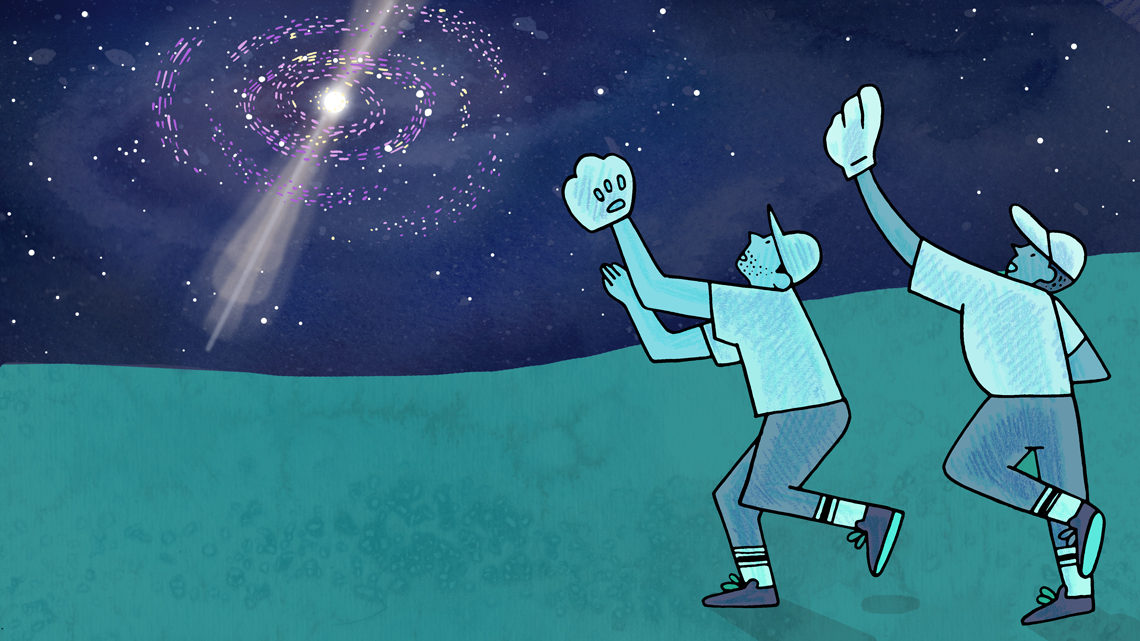
In 1987, Supernova 1987A exploded in a nearby galaxy. Kamiokande-II, the Irvine-Michigan-Brookhaven detector and the Baksan Neutrino Observatory each recorded a burst of neutrino events from the explosion. The detections allowed scientists to confirm theoretical models of what goes on in the heart of these violent stellar explosions.
Although we’re not sure when the next galactic supernova will go off, the idea that it could happen in the coming decades—during a time where there are a growing number of neutrino experiments in operation—is exciting to many, including Scholberg and Friedland.
“The rate of supernova explosions is estimated to be two to three per century in our galaxy,” says Friedland, “which is about the same rate as large earthquakes occurring in the Bay Area. In the case of supernovae, just as in the case of earthquakes, we don’t know if one will go off tomorrow, but it definitely pays to be prepared.”
At the moment, Scholberg says, seven large neutrino detectors could observe a galactic supernova, and more will join them in the coming years. Seeing a nearby supernova would allow us to pursue many detailed questions about distant astrophysical phenomena, which will better inform our theories of the universe.
Going into overtime
Before the end of this decade, additional experiments such as JUNO, an underground observatory in China that will build on the successes of the Daya Bay reactor experiment, will come online.
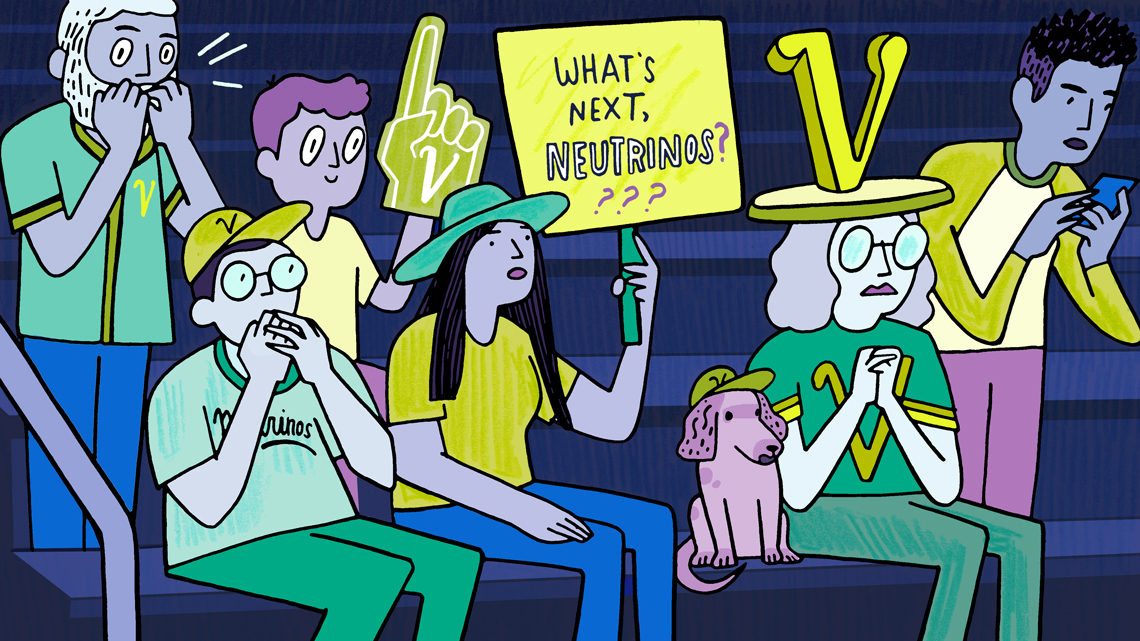
In the next 10 to 15 years, experiments will continue to grow and improve. The Fermilab-hosted Deep Underground Neutrino Experiment, DUNE, will send neutrinos racing more than 800 miles across the United States to better understand their oscillations and potentially definitively answer some of our current questions.
Each question scientists answer is tied to other questions, and every point scored brings physicists ever closer to triumphs that could revolutionize our picture of the universe, from its tiniest particles to its largest scale astrophysical phenomena.
“Every day I come into work and we take a little step forward to some new understanding,” Mahn says. “There’s more stuff out there and we’re getting closer to it.”



